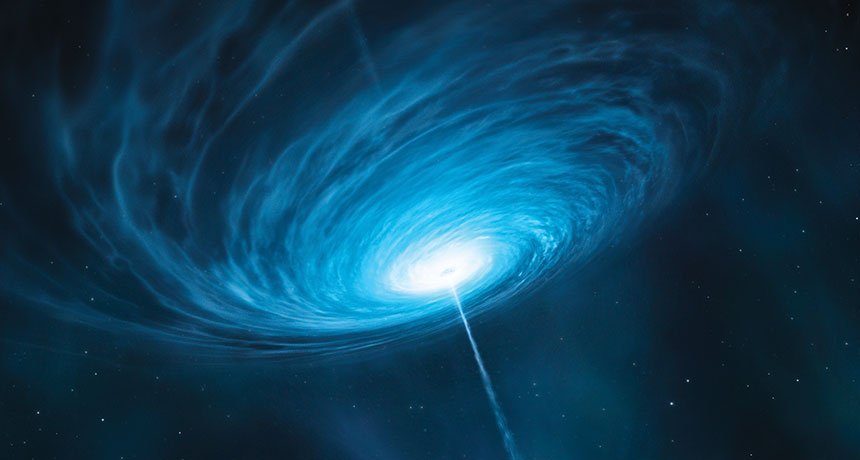
WILD WHIRL Winds whipping around the black hole at the center of a quasar, such as the one illustrated here, are moving at roughly 20 percent of the speed of light, a new study reports.
M. Kornmesser/ESO

WILD WHIRL Winds whipping around the black hole at the center of a quasar, such as the one illustrated here, are moving at roughly 20 percent of the speed of light, a new study reports.
M. Kornmesser/ESO